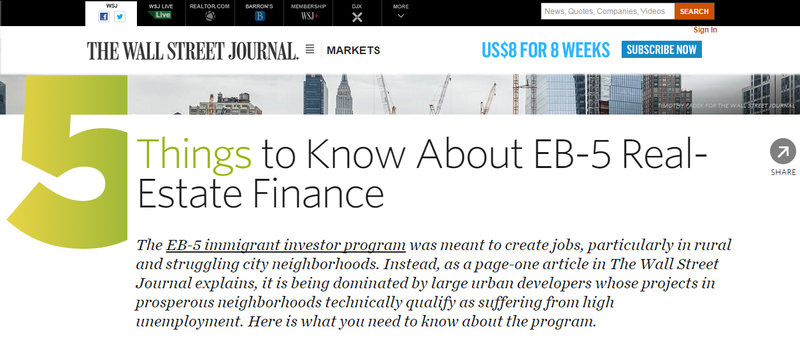The EB-5 immigrant investor program was meant to create jobs, particularly in rural and struggling city neighborhoods. Instead, as a page-one article in The Wall Street Journal explains, it is being dominated by large urban developers whose projects in prosperous neighborhoods technically qualify as suffering from high unemployment. Here is what you need to know about the program.
1 What Is EB-5?
EB-5 is a federal program, initiated in 1990, through which foreign investors in U.S. business can obtain U.S. residence status. They can gain the status if they make an investment in a new business venture that is measured, after two years, as having created at least 10 U.S. jobs.
2 What Are the Program's Goals?
The program was intended particularly to boost rural and struggling urban neighborhoods, offering a lower minimum investment for those areas. For a project in rural or high-unemployment U.S. areas, the minimum a foreign investor must put up is $500,000. That compares with $1 million for a standard project. It is far easier to raise money at the $500,000 level.
3 How Do Real-Estate Developers Use the EB-5 Program?
In recent years, U.S. real-estate developers have flocked to the program, tapping foreign investors–mostly Chinese–to help finance new skyscrapers in major cities around the U.S. With the investors willing to accept very low returns, the program provides a cheap source of financing to developers. The immigrant investors, meanwhile, have shown a preference for flashy real-estate projects over rural manufacturing plants.
4 The Rise of ‘Gerrymandering’
The bulk of the projects that are raising money, while in prosperous neighborhoods, technically qualify as being in high-unemployment areas. They can do this because state governments are allowed to define the boundaries of a high-unemployment area. They often draw maps that stitch together wealthy census tracts with poor ones to qualify for the benefit. Critics, including an Obama administration official, call this “gerrymandering.”
5 A Struggle in Congress
The practice of drawing these maps is getting new scrutiny in Congress, because a key piece of the program is set to expire at the end of September. Sen. Charles Grassley (R., Iowa) and Sen. Patrick Leahy (D., Vt.) have introduced legislation that would roll back the practice by requiring projects to use a single Census tract. Developers are pushing back. They say Congress shouldn’t take actions that would curtail use of EB-5, as the developments create jobs well beyond the borders of immediately surrounding neighborhoods, helping to boost employment in industries like construction.
http://blogs.wsj.com/briefly/2015/09/09/5-things-to-know-about-eb-5-real-estate-finance/
Mentions
States
- Washington
Videos





Subscribe for News
Site Digest
Join Professionals on EB5Projects.com →
Securities Disclaimer
This website is for informational purposes only and does not constitute an offer or solicitation to sell shares or securities. Any such offer or solicitation will be made only by means of an investment's confidential Offering Memorandum and in accordance with the terms of all applicable securities and other laws. This website does not constitute or form part of, and should not be construed as, any offer for sale or subscription of, or any invitation to offer to buy or subscribe for, any securities, nor should it or any part of it form the basis of, or be relied on in any connection with, any contract or commitment whatsoever. EB5Projects.com LLC and its affiliates expressly disclaim any and all responsibility for any direct or consequential loss or damage of any kind whatsoever arising directly or indirectly from: (i) reliance on any information contained in the website, (ii) any error, omission or inaccuracy in any such information or (iii) any action resulting therefrom.



